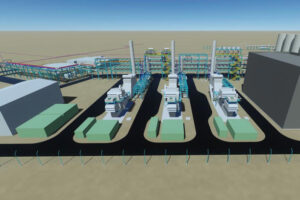Experts call for review of fracking’s ‘traffic light’ monitoring
Leading scientists have said that the traffic light monitoring scheme currently used to monitor fracking-related seismic activity could safely be increased to allow for more fracking.
Questions have been raised about the suitability of the scheme after hydraulic fracturing by oil and gas production firm Cuadrilla at Preston New Road, Lancashire, late last year led to seismic activity nearby.
Current rules mean that fracking must be suspended for 18 hours if any tremor over 0.5 magnitude is detected – which happened four times at PNR last autumn.
However, scientists have said it could be safe to increase the threshold to 1.5 magnitude without risk of any serious concern.
Dr Ben Edwards, reader in seismology at the University of Liverpool, said: ‘Raising the current threshold levels for the traffic light system for hydraulic fracturing in the UK is a decision for policymakers.
‘However, we now have greater scientific understanding of the induced seismicity that has occurred at sites in the UK and when we put this in context of our knowledge of naturally occurring seismic events that regularly occur in the UK, from a scientific point of view, there is scope to review the current threshold level.’
Hydraulic fracturing or ‘fracking’, a process which fractures rock using pressurised liquid to release natural gas, has become controversial in the UK, sparking protests and legal challenges.
Fracking resumed in the UK last year for the first time since 2011 after it was halted due to fears it would induce dangerous earthquakes.
The UK government supports fracking but has said there are currently no plans to relax its regulations, which are some of the most stringent in the world.
At a news conference held earlier this week, Dr Brian Baptie, head of seismicity at the British Geological Survey, said: ‘The existing regulations are really quite conservative. They are set at a level of earthquake that is really very unlikely to be felt.
‘So something like 1.5 is a level of earthquake that is not going to be felt widely by people – I think it is something we ought to have a look at.’
Environmental campaigners have reacted angrily at the suggestion, pointing out that raising the limit could lead to progressively worse tremors.
Dr Edwards admitted that raising the limit could lead to higher magnitude events, which can occur after fracking has stopped, but said they would still be too small to cause any damage.
A spokesperson for Frack Free Lancashire said: ‘The Traffic Light System (TLS) was devised, in conjunction with Cuadrilla themselves, to protect the public from the potential subsurface impacts of fracking.
‘It is based on an acceptance that the seismic events cannot be constrained by turning off a tap, and that they may get progressively more frequent and larger after the warning level is exceeded and work is stopped.’
Aside from earthquakes, fracking has long been linked with other concerns such as air pollution.
In 2015 a US study found that fracking can expose people living or working near to gas wells to unsafe levels of air pollutants, leaving them at an increased risk of developing cancer and respiratory ailments.
Image credit: Reclaim the Power















